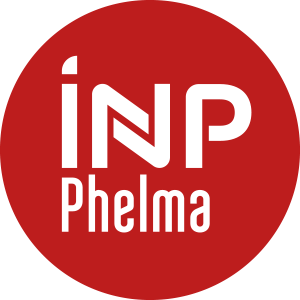Number of hours
- Lectures 26.0
- Projects 0
- Tutorials 18.0
- Internship 0
- Laboratory works 0
ECTS
ECTS 4.0
Goal(s)
- Mathematical tools for physicists and engineers
For an engineer or a researcher, mathematics is an indispensable toolbox for the resolution of applied problems. This lecture consequently aims in introducing to the GEN2A alumni the following advanced methods: (i) use of orthonormal function bases. These bases use special functions frequently encountered in physics; (ii) Green’s functions, a powerful mean to solve PDE with boundary conditions. Green’s functions rely on the bases presented in (i).
The lecture requires a good knowledge in mathematics: routine use of differential and integral calculus, complex and vector analysis, series, etc. Each part of the lecture will be illustrated with a practical application.
- Thermal Radiation Heat Transfer
This course introduces the fundamentals of thermal radiation heat transfer. The following topics are covered: basic concepts and quantities related to radiation transfer, principles governing the radiation exchange between surfaces and a brief introduction to the resolution methods for radiation transport. This course in taught in French.
- Nuclear Physics 1 (12h)
This course gives the basics of nuclear physics, a prerequisite for other courses in the program (radiation matter interactions, detection, nuclear physics 2, etc.): relativity, basic notions of the nucleus, energy balance of reactions, liquid drop model, etc.
Content(s)
Mathematical tools for physicists and engineers (12h CM - 8h TD dédoublés)
Thermal Radiation Heat Transfer (6h CM - 6h TD dédoublés)
Nuclear Physics 1 (8h CM - 4h TD)
- Mathematical tools for physicists and engineers (Lecture : 12h - Tutorials : 8h)
- Orthonormal bases of functions
Interest in physics, Laplace eigenvalues and eigenfunctions on the: (i) cube; (ii) cylinder: Bessel functions, Fourier-Bessel series; (iii) sphere: Legendre polynomials, Fourier-Legendre series, spherical harmonics, application examples of function bases. - Green’s functions
Resolution of PDE with boundary conditions, eigenvalue expansion of Green’s functions, Laplace operator case, application examples.
- Orthonormal bases of functions
- Thermal Radiation Heat Transfer (Lecture : 6h - Tutorials : 6h)
Chapter 1 - Radiation Transfer: Processes and Properties
Fundamental Concepts: Spectral Intensity, Emissive Power, Irradiation Power and Radiosity. Blackbody Radiation, Planck distribution and Stefan-Boltzmann law. Surface Absorption, Reflection and Transmission. Opaque versus transparent media. Kirchhoff’s Law. The Gray Surface.
Chapter 2 – Radiation Exchange Between Surfaces
View Factor integral. View Factor Relations. View factors properties. Blackbody Radiation Exchange. Radiation exchange between diffuse, gray and opaque surfaces in an enclosure (N-Surfaces)
Chapter 3 - Resolution Methods for Radiation Transport
Transfer in Participating Media. Absorbing, Emitting, Non-scattering Medium. Absorbing, Emitting and Scattering Medium. Radiative Transfer Equation. Solution of the Transfer Equation. Two-Flux Model.
- Nuclear Physics 1 (8h lecture - 4h exercices)
Nuclear physics is concerned with the set (In set theory, a set intuitively designates a collection of objects (called elements...) of physical phenomena involving the atomic nucleus. This physics, also known as subatomic physics, is at the heart of the fission process and particle physics.
1/ Relativity, particles and forces
2/ General properties of the nucleus
3/ Macroscopic model of the nucleus: the liquid drop
Prerequisites
- Mathematical tools for physicists and engineers
Fundamentals in mathematics (Bachelor degree)
- Thermal Radiation Heat Transfer
• Fundamental of heat transfer: conduction and convection
• Linear algebra
• Vector analysis
• Advanced calculus, including: Gauss’s and Stokes’s theorems, Partial differential equations (PDEs), Multivariable integration and differentiation and Complex variables.
- Nuclear Physics 1
Basic concepts of quantum and atomic physics
Written exam (3 hours: one hour per topic). Course notes permitted (1 double-sided A4 page for the nuclear physics 1 course). Calculator required. Same conditions for the second session.
- Thermal Radiation Heat Transfer
[1] “Fundamentals of Heat and Mass Transfer”, F. P. Incropera (Auteur), D. P. DeWitt, T. L. Bergman and A.S. Lavine, John Wiley & Sons, 2006.
[2] “Thermal Radiative Transfer and Properties”, M.Q. Brewster, John Wiley & Sons, 1992.
- Physique nucléaire 1
Mayet, Frédéric. Physique nucléaire appliquée. De Boeck Supérieur, 2017



